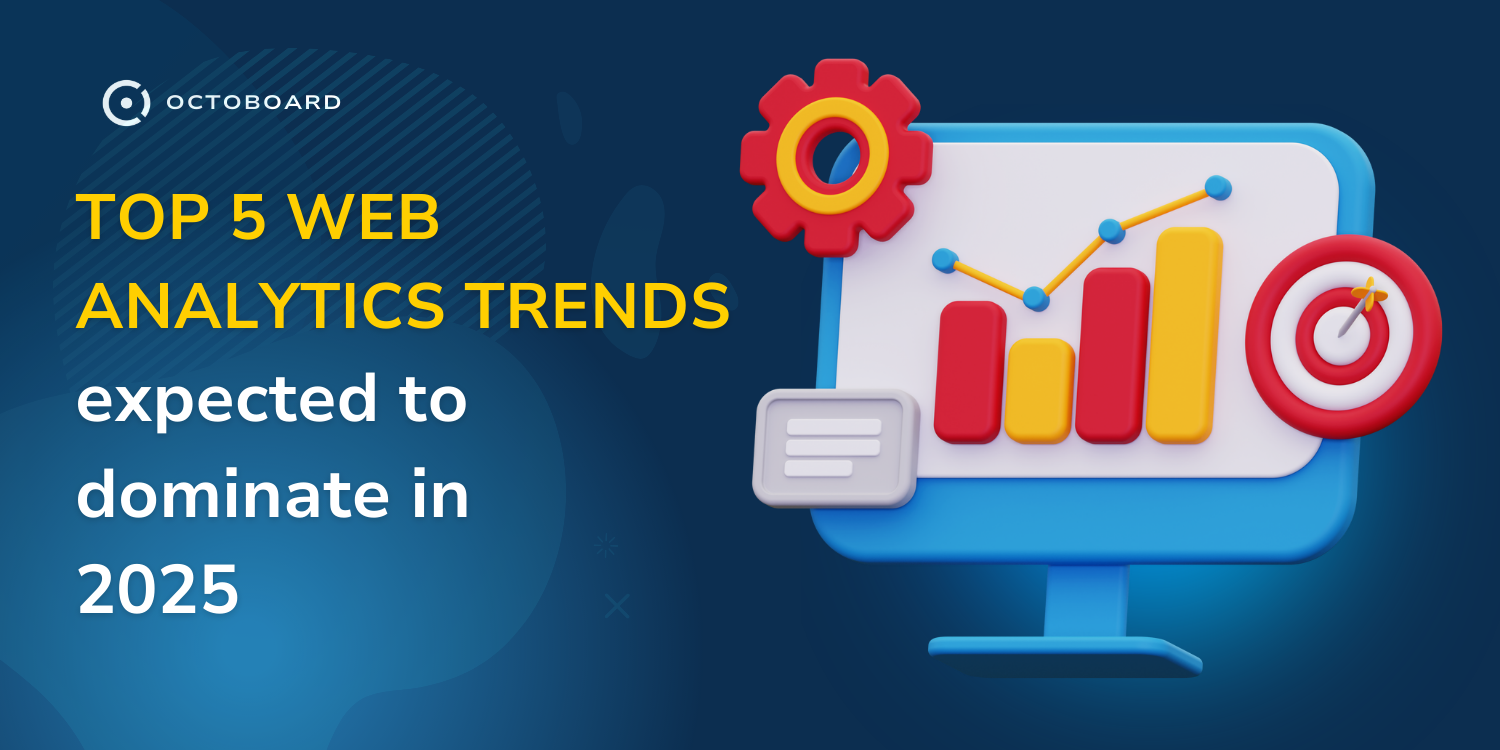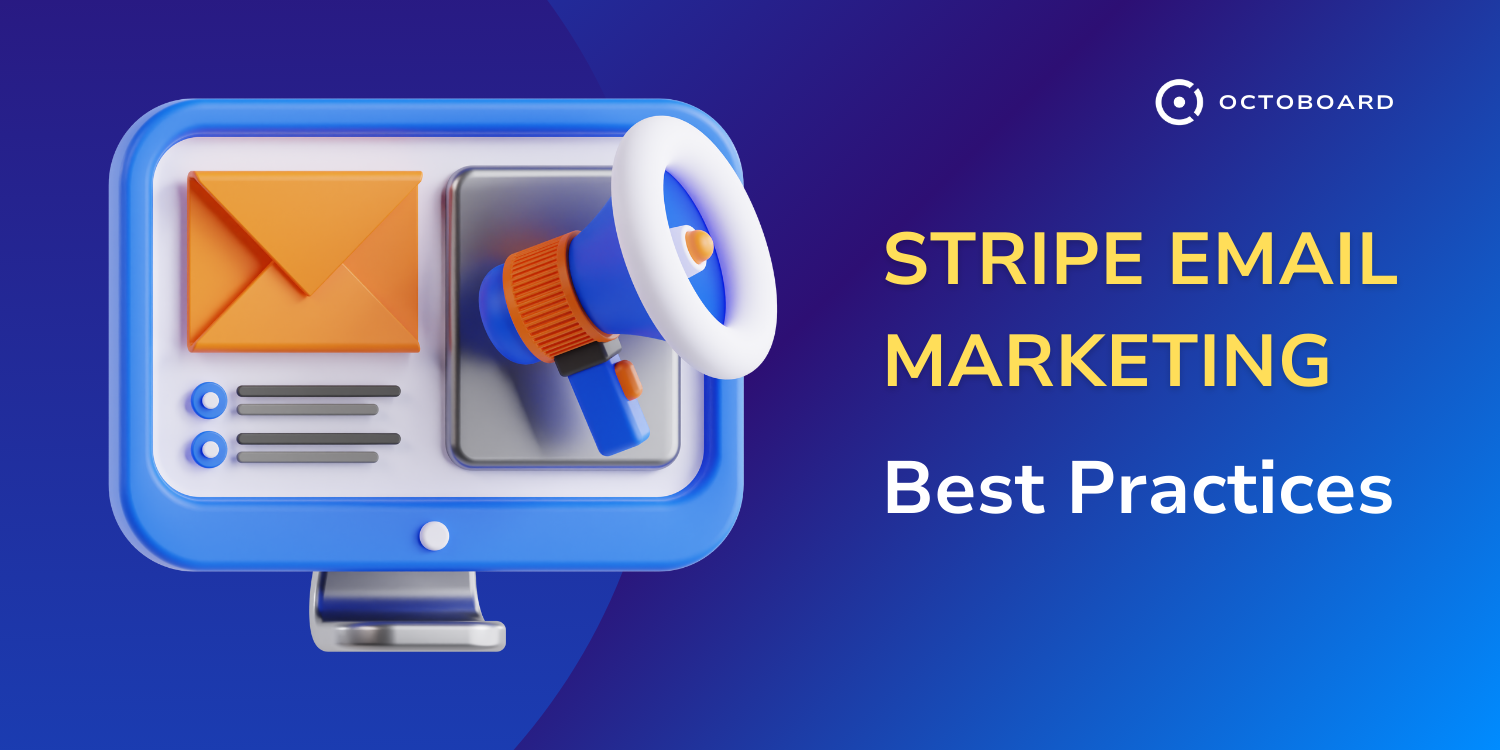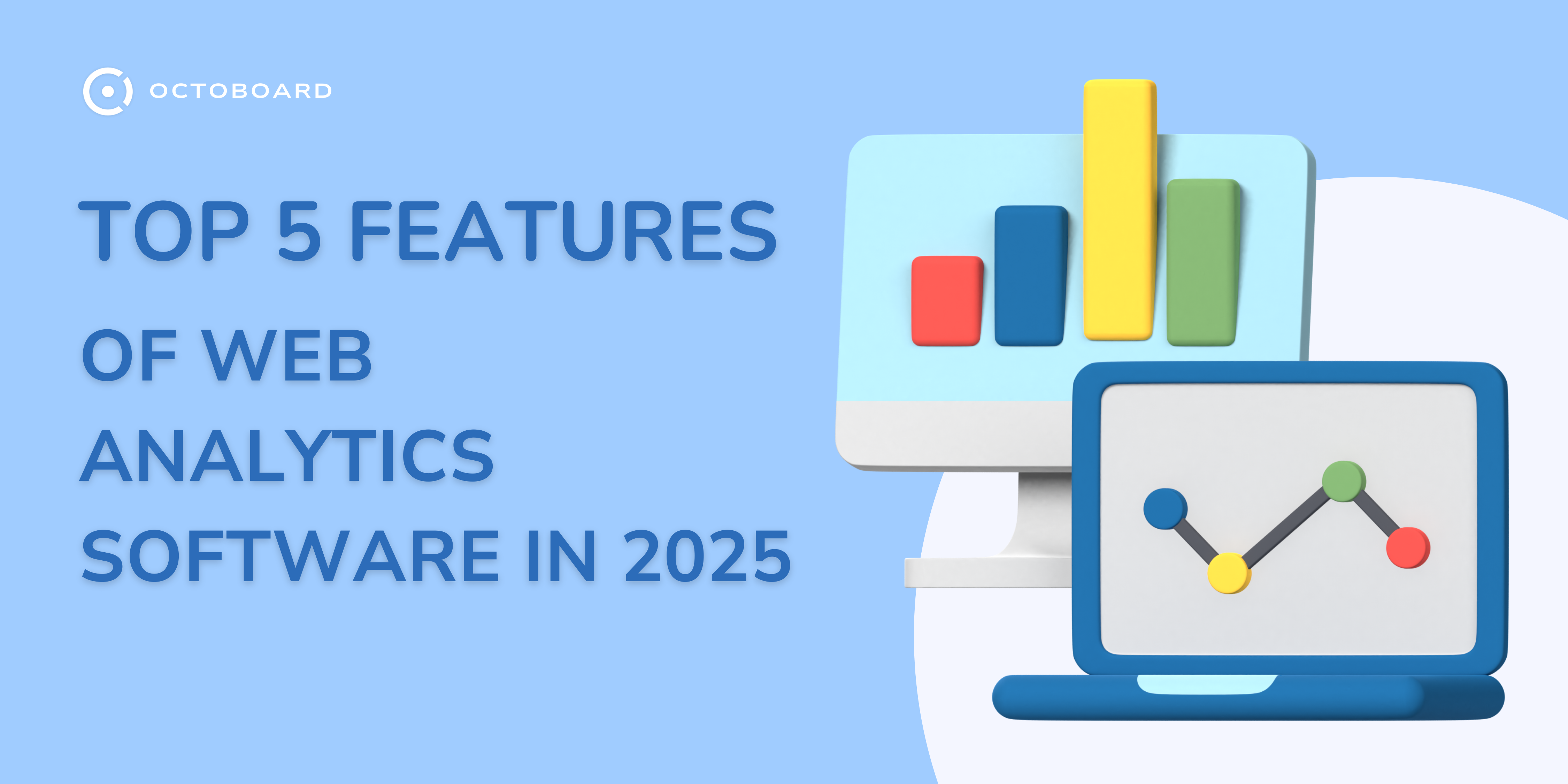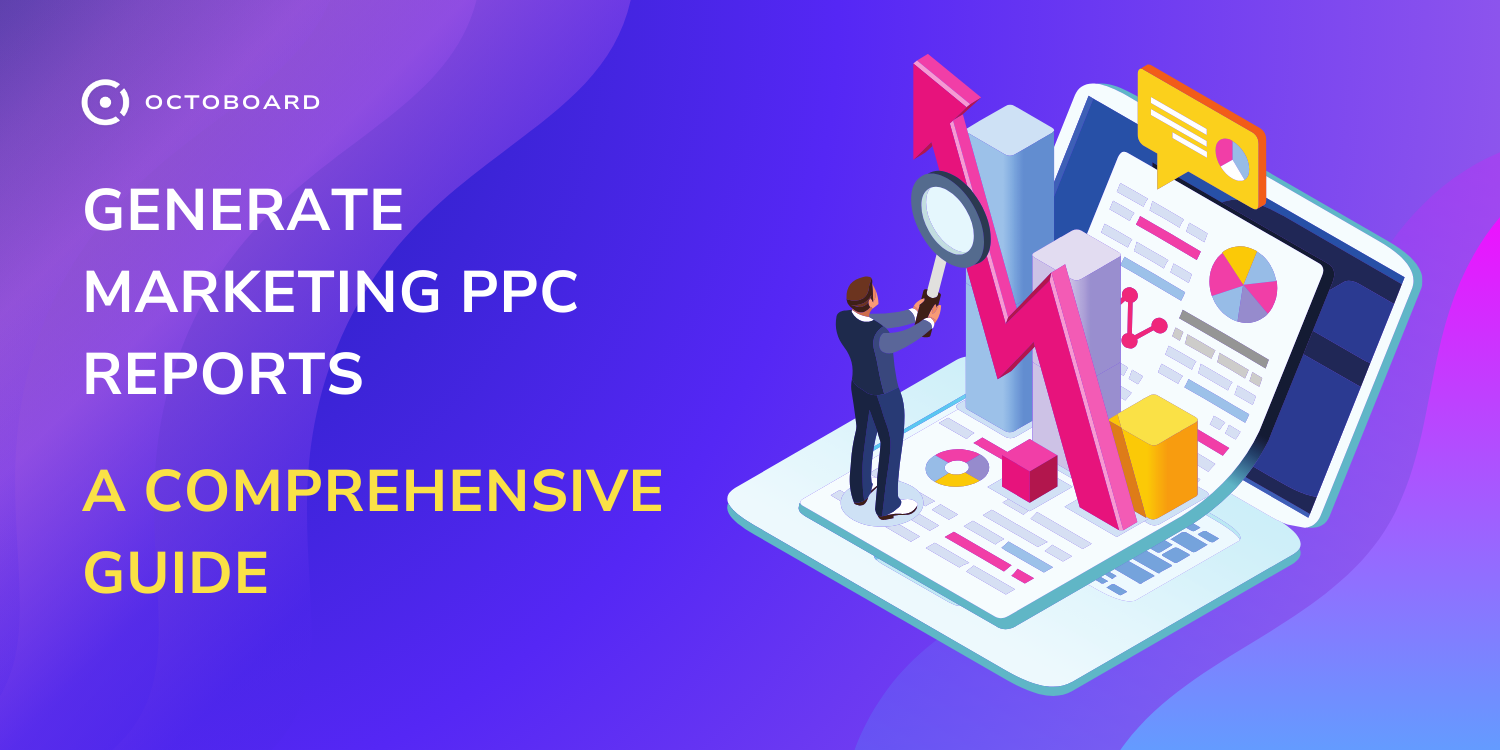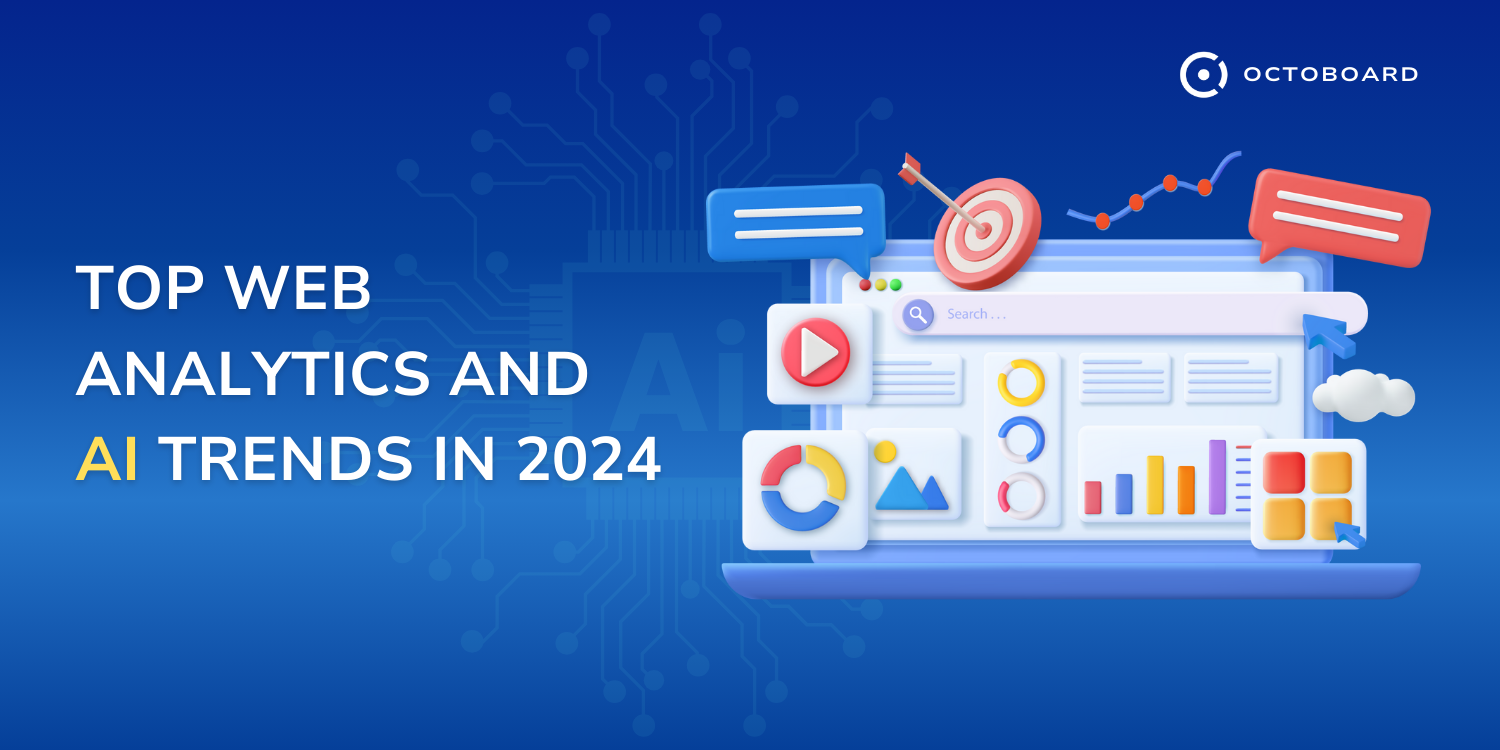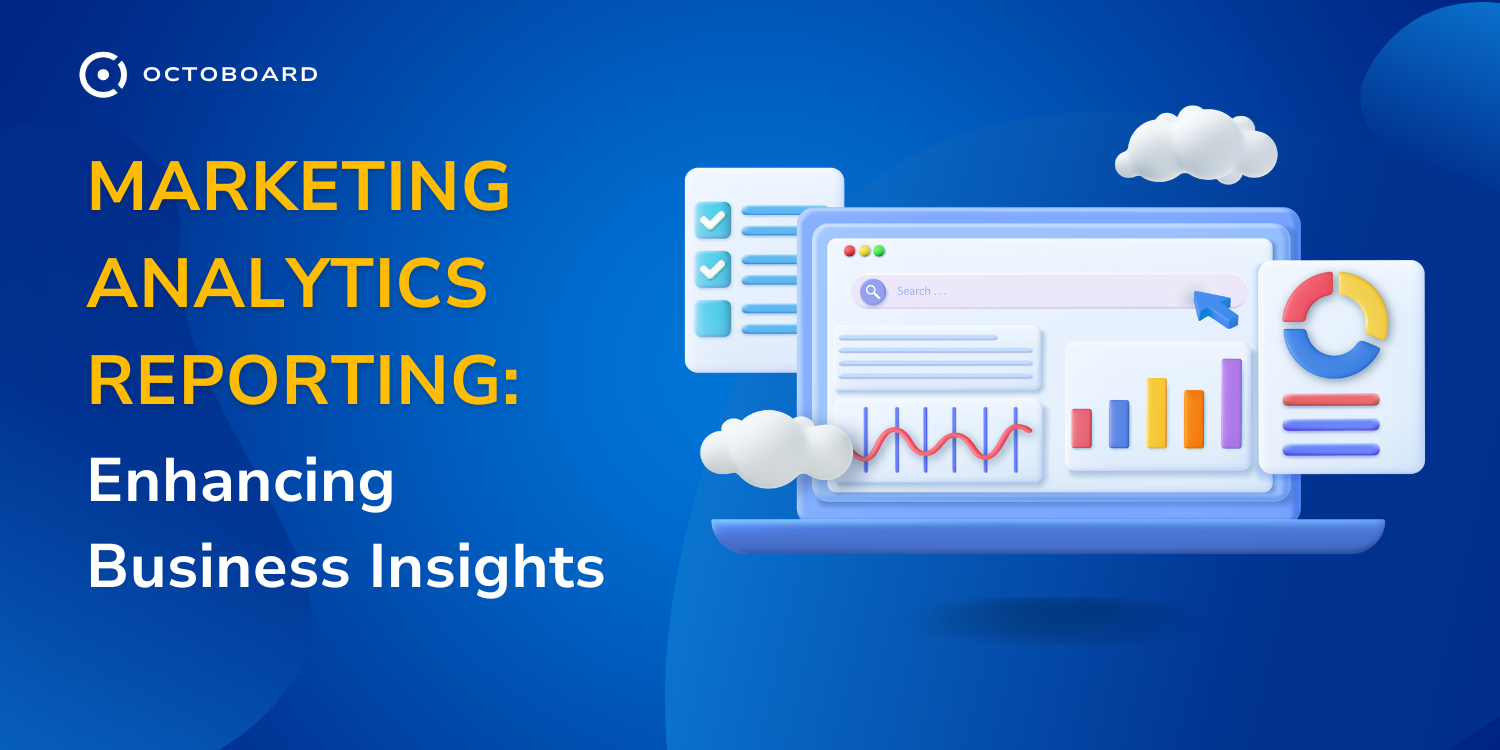Email Marketing trends 2024: benefits of hyper-personalization
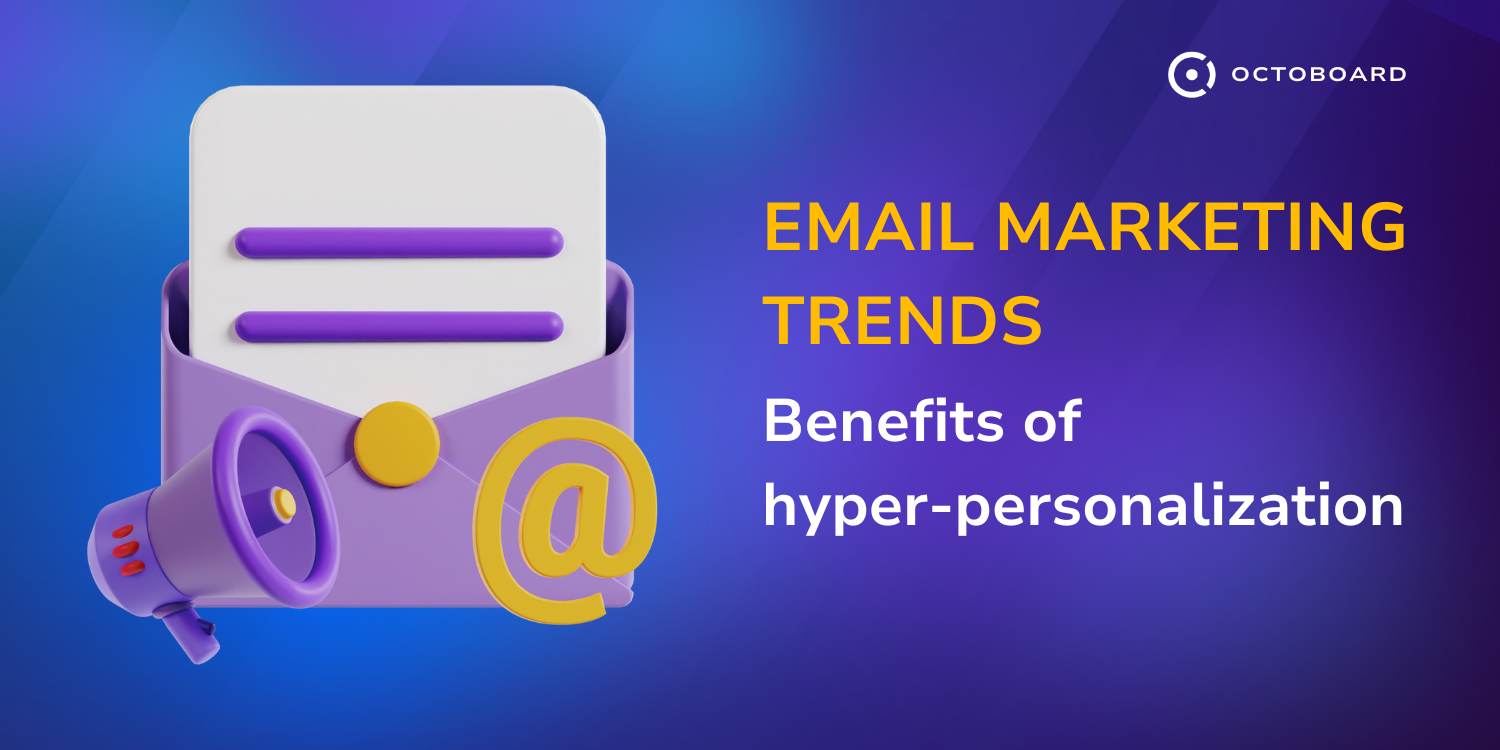
- Enhanced Customer Experience
- Improved Engagement Metrics
- Increased Customer Loyalty
- Better Targeting and Segmentation
- Higher Conversion Rates
- Valuable Analytical Insights
- What data is used for hyper-personalization in email marketing
- Demographic Data
- Behavioral Data
- Engagement Data
- Psychographic Data
- Contextual Data
- Social Media Activity
- Customer Lifecycle Stage
- What are the most effective ways to collect customer data for hyper-personalization
- Website Activity Tracking
- Customer Surveys and Feedback
- Social Media Insights
- Purchase History Analysis
- Email Engagement Metrics
- Third-Party Data Sources
- Real-Time Data Collection
- Loyalty Programs
- What are the best practices for using third-party data in hyper-personalization
- Obtain Explicit Consent
- Ensure Transparency
- Utilize Data Minimization
- Implement Robust Security Measures
- Anonymize and Aggregate Data
- Offer Preference Management Features
- Regularly Review and Update Practices
- Stay Compliant with Regulations
Hyper-personalization in email marketing offers several key benefits that enhance both customer engagement and business performance. Here are the primary advantages:
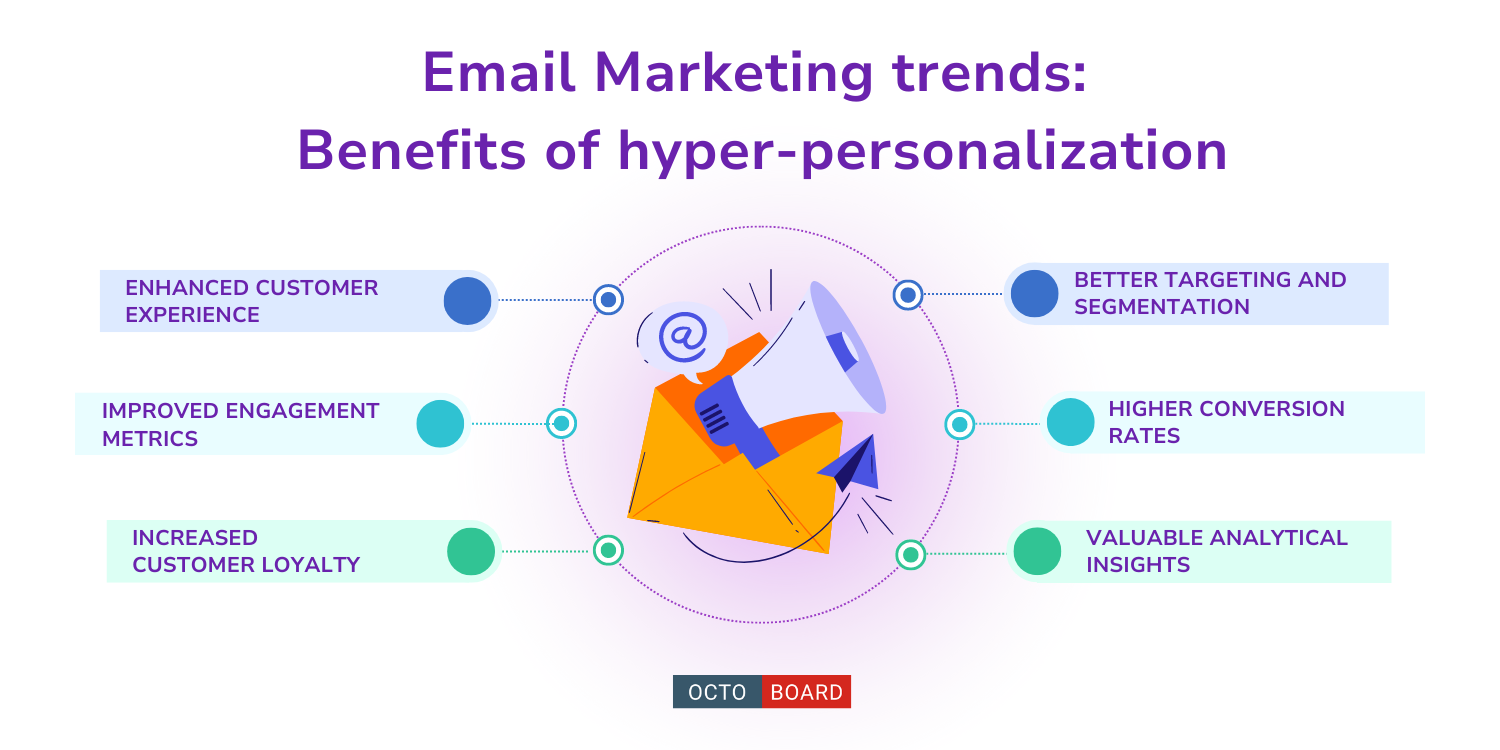
Hyper-personalization tailors communications to meet individual customer preferences and behaviors, creating a more meaningful interaction. This approach reduces irrelevant messaging and increases the likelihood that customers will find the content valuable, leading to a more enjoyable experience overall.
Emails that resonate with recipients on a personal level tend to achieve higher open and click-through rates. When customers receive tailored content, they are more likely to engage with it, which can significantly boost overall campaign performance.
By fostering personalized interactions, brands can cultivate stronger relationships with their customers. This connection encourages repeat business and enhances customer retention, as individuals are more inclined to remain loyal to brands that understand their unique needs.

Hyper-personalization relies on extensive data analysis to create detailed customer profiles. This information allows marketers to target specific segments with relevant messages, improving the effectiveness of campaigns and ensuring that the right content reaches the right audience at the right time.
With messages tailored to individual interests and behaviors, hyper-personalized emails can lead to increased conversion rates. Customers are more likely to take action—such as making a purchase—when they receive offers that align closely with their preferences.
The data collected through hyper-personalization efforts provides brands with deeper insights into customer behavior and preferences. This information can be leveraged to refine marketing strategies across various channels, ultimately enhancing overall business performance.
Incorporating hyper-personalization into email marketing strategies not only meets modern consumer expectations for tailored experiences but also drives significant business benefits, including improved engagement, loyalty, and conversion rates. As technology advances, brands that effectively utilize hyper-personalization will likely gain a competitive edge in the marketplace.
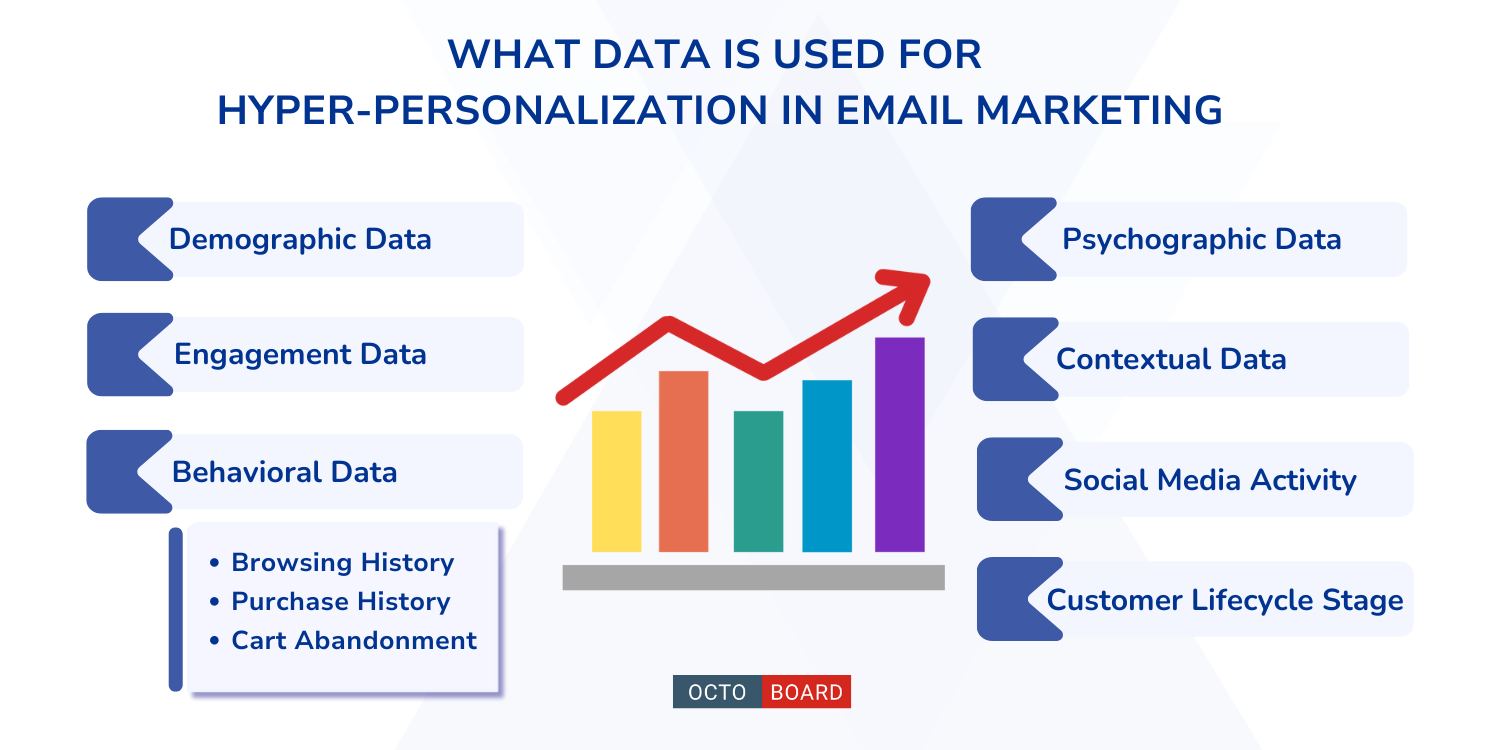
Hyper-personalization in email marketing relies on various types of data to create highly tailored and relevant experiences for individual customers. The following data points are typically utilized:
Basic demographic information such as age, gender, location, and income level helps marketers understand the general characteristics of their audience. This foundational data can guide initial segmentation efforts.
This includes detailed insights into customer interactions with the brand, such as:
- Browsing History: Pages visited on the website, time spent on specific products, and items viewed or saved.
- Purchase History: Previous purchases provide insights into customer preferences and can inform future product recommendations.
- Cart Abandonment: Tracking items left in shopping carts allows for targeted follow-up emails to encourage completion of purchases.
Metrics related to how customers interact with emails, such as open rates, click-through rates, and responses to previous campaigns, help refine future email strategies.

Understanding customers' interests, values, and lifestyles allows for more nuanced personalization. This can include preferences for certain product types or shopping habits (e.g., time of day they typically shop).
This involves real-time data that can influence messaging based on current circumstances, such as weather conditions affecting product relevance (e.g., promoting winter clothing during cold weather).
Insights gained from customers' interactions on social media platforms can provide additional context about their interests and preferences.
Data indicating where a customer is in their journey—new subscriber, repeat buyer, or lapsed customer—can help tailor messages that resonate with their current needs.
By leveraging this diverse range of data—ranging from basic demographics to intricate behavioral patterns—marketers can create hyper-personalized email campaigns that significantly enhance customer engagement and drive conversions
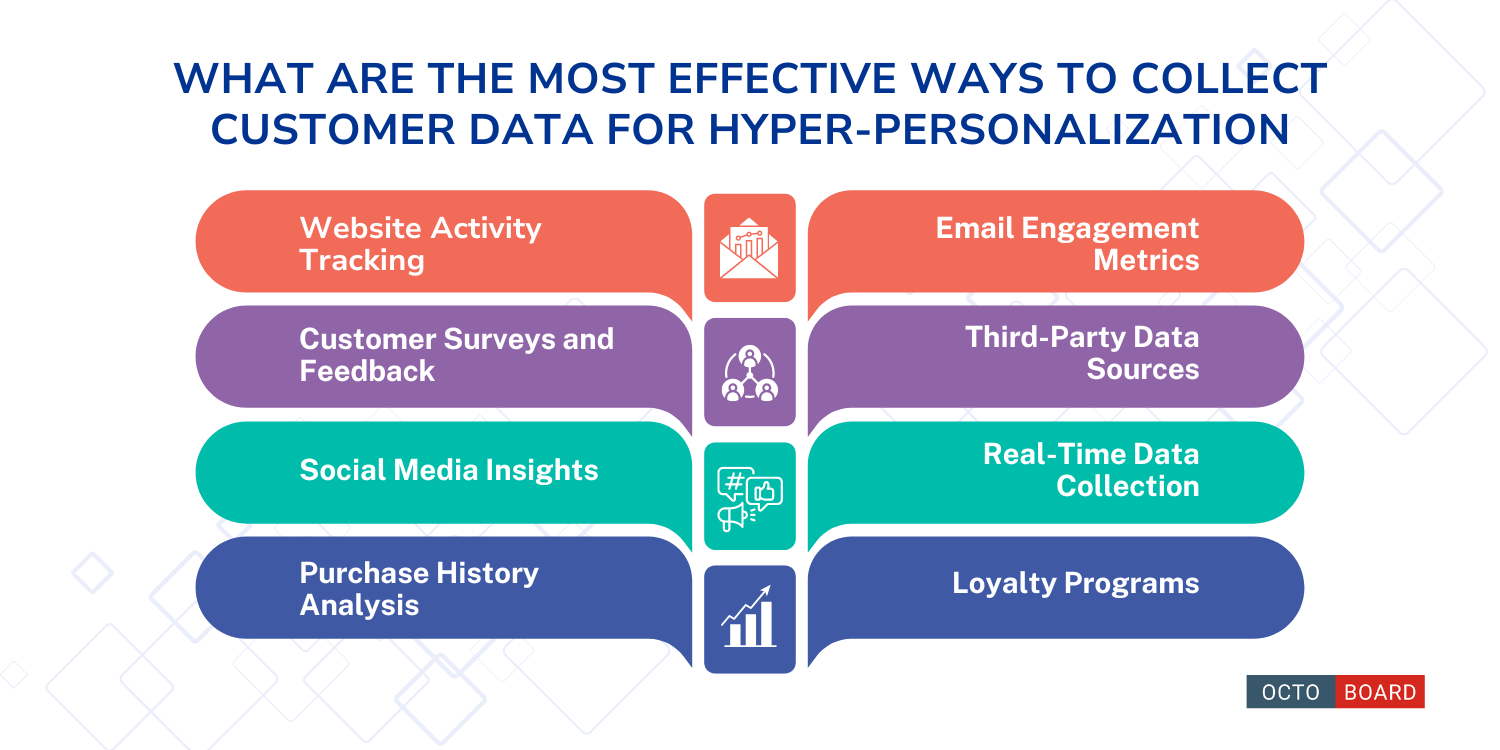
To effectively implement hyper-personalization in email marketing, businesses can utilize various methods to collect customer data. Here are the most effective ways to gather this data:
Monitoring user behavior on your website is crucial. This includes tracking pages visited, time spent on each page, and items added to or removed from shopping carts. This data helps create a detailed profile of customer preferences and interests.
Directly asking customers about their preferences through surveys can yield valuable insights. Surveys can be conducted via email, on the website, or through social media, allowing brands to gather information about customer needs and expectations.
Engagement on social media platforms provides rich data regarding customer interests and behaviors. Analyzing likes, shares, comments, and follows can help brands understand what content resonates with their audience.

Reviewing past purchases enables businesses to identify patterns and preferences. This information can be used to recommend similar products or send targeted promotions based on previous buying behavior.
Tracking how customers interact with previous emails—such as open rates, click-through rates, and response rates—can inform future campaigns. Understanding which types of content perform best allows for more tailored messaging.
Utilizing third-party data can enhance customer profiles by providing additional demographic or behavioral insights that may not be available internally. This can include data purchased from external vendors that specialize in consumer behavior analytics.
Implementing tools that capture real-time data during customer interactions (like browsing sessions) allows for immediate personalization based on current behaviors, making communications more relevant.
Encouraging customers to join loyalty programs can provide ongoing data collection opportunities. Customers often share personal information in exchange for rewards, which can be used to tailor future communications.
By employing these methods to collect customer data, businesses can create comprehensive profiles that enable hyper-personalization in their email marketing
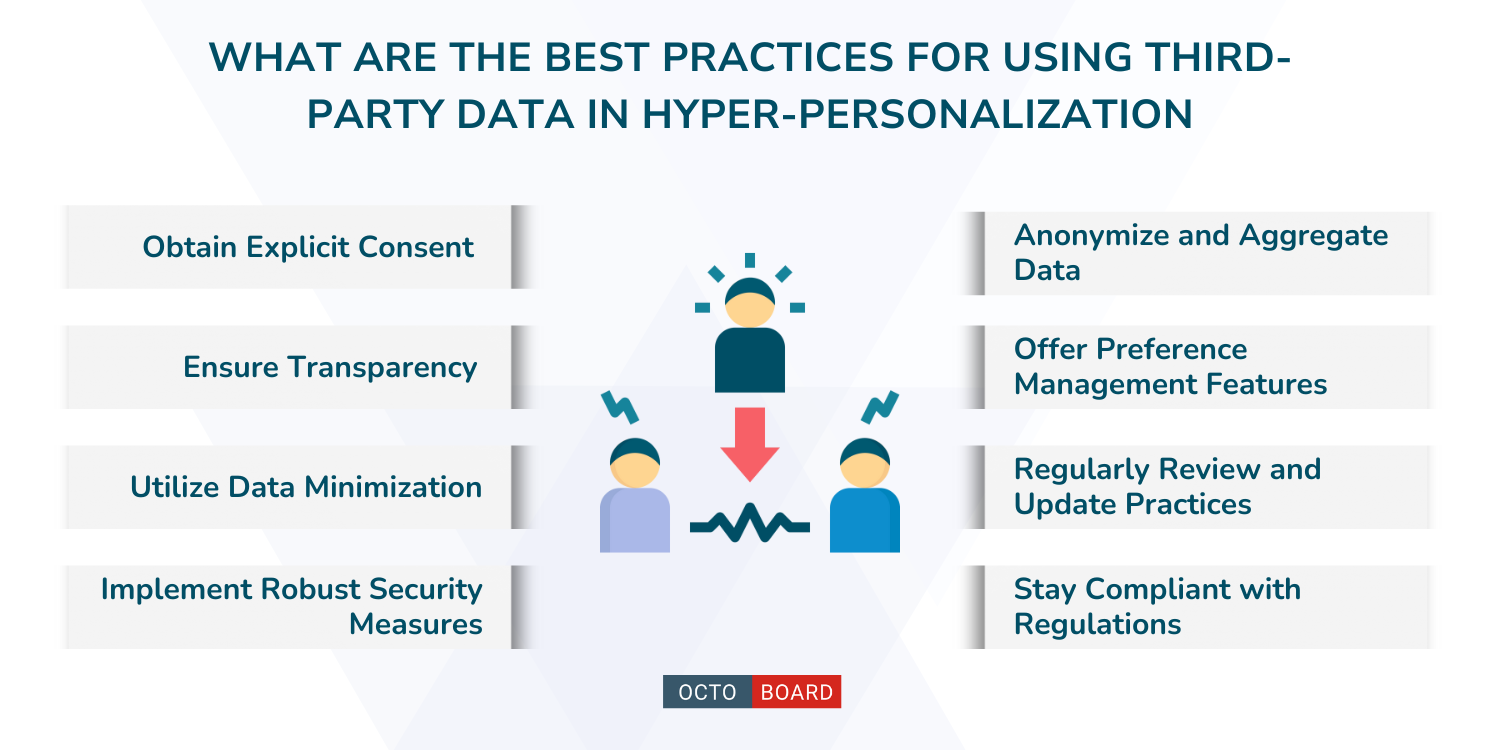
When utilizing third-party data for hyper-personalization in email marketing, it is essential to adhere to best practices that ensure ethical use, compliance with regulations, and the maintenance of customer trust. Here are the key best practices:
Prioritize obtaining clear and explicit consent from customers before collecting and using their personal data. Implement opt-in mechanisms that inform users about what data will be collected and how it will be used. This is crucial for compliance with regulations such as GDPR.
Maintain transparency in data collection practices by clearly communicating how customer data will be collected, stored, and used. Provide accessible privacy policies that outline the types of data collected and the purposes for which it will be utilized. This builds trust and allows customers to make informed decisions about sharing their information.
Adopt a principle of data minimization by collecting only the necessary data required for personalization efforts. This approach reduces privacy risks and potential data breaches, ensuring that only relevant information is gathered and used.

Protect customer data by implementing strong security protocols, such as encryption and secure storage solutions. Regularly update security measures to safeguard against breaches and ensure customer confidence in how their data is handled.
Whenever possible, anonymize personally identifiable information (PII) and aggregate data to protect individual privacy while still gaining valuable insights for personalization. This practice helps mitigate risks associated with data exposure.
Provide customers with options to manage their data preferences, allowing them to choose what information they are comfortable sharing for personalization purposes. This empowers customers and enhances their trust in your brand.
Continuously evaluate your hyper-personalization strategies and the effectiveness of your data practices. Regularly analyze the impact of third-party data on your campaigns and refine your methods based on customer feedback and engagement metrics.
Keep abreast of changing data privacy laws and regulations to ensure compliance. This includes understanding the implications of upcoming changes, such as the phasing out of third-party cookies, which may affect how you collect and use customer data.
By following these best practices, businesses can effectively leverage third-party data for hyper-personalization while maintaining ethical standards, ensuring compliance with regulations, and fostering trust with their customers. This approach not only enhances customer engagement but also supports long-term brand loyalty.

